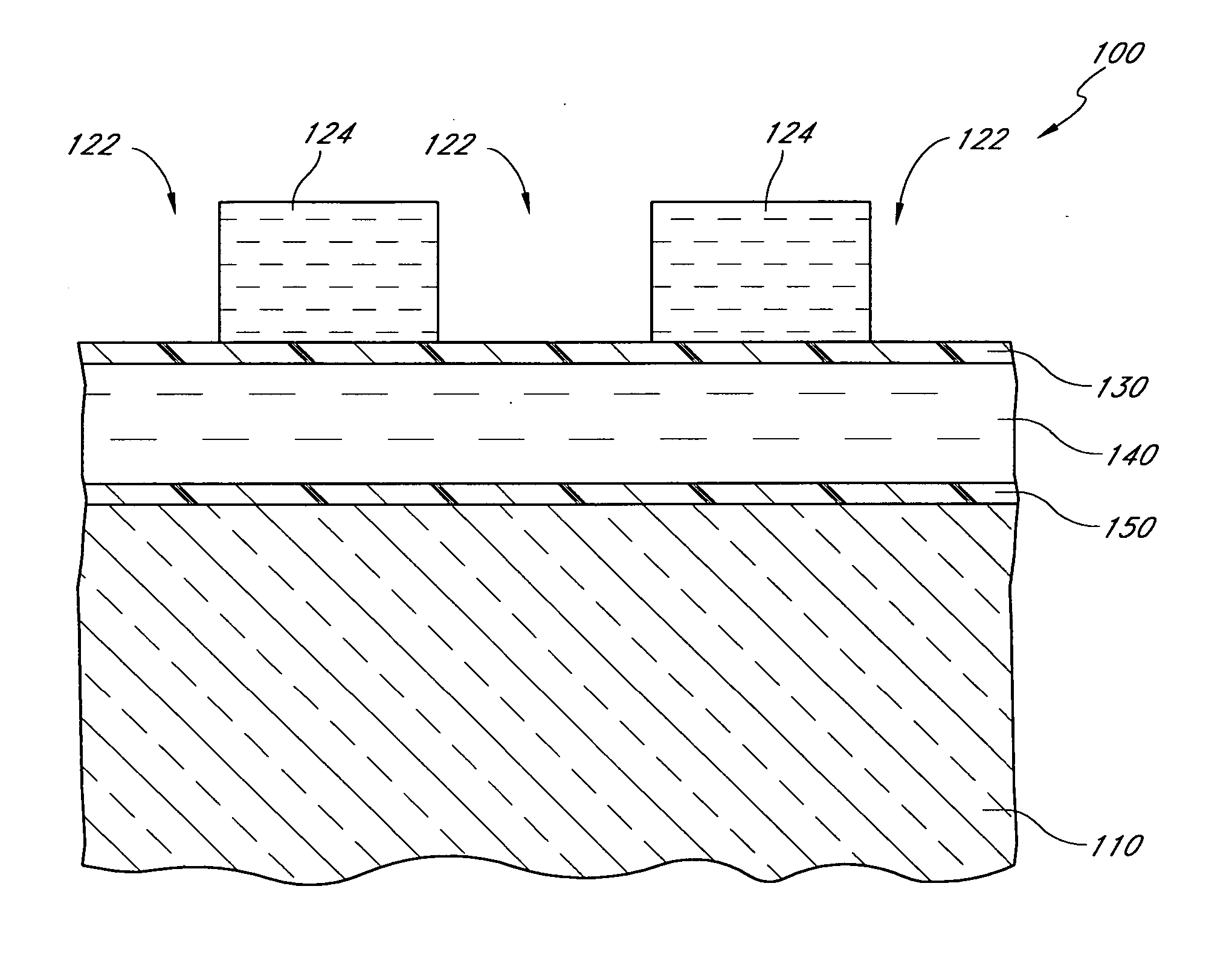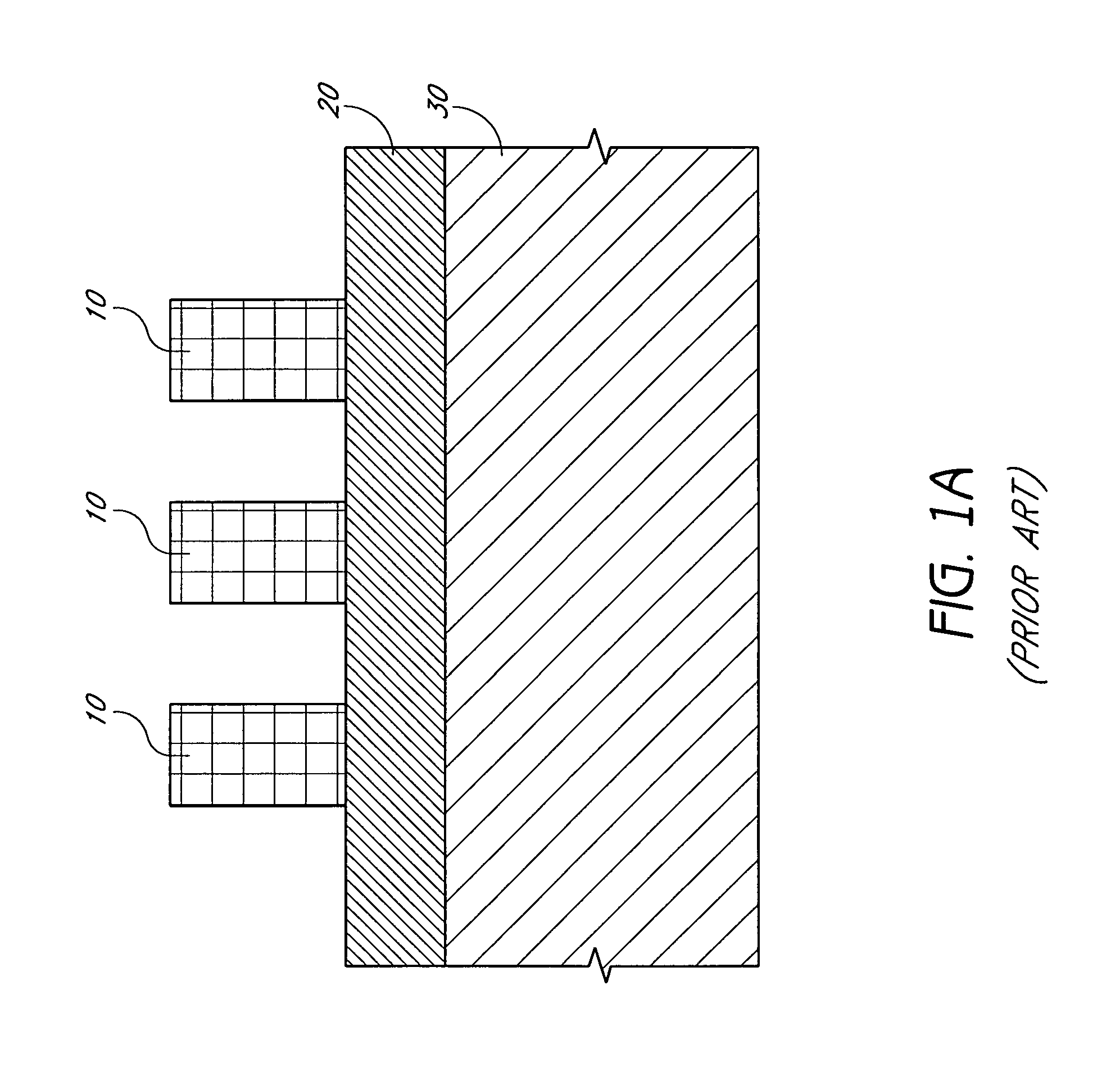Pitch multiplication spacers and methods of forming the same
a multi-spacer and spacer technology, applied in the field of masking techniques, can solve the problems of limiting the choice of materials, limiting the latitude of the process, and the minimum pitch of the photolithographic technique is an obstacle to the reduction of feature siz
- Summary
- Abstract
- Description
- Claims
- Application Information
AI Technical Summary
Benefits of technology
Problems solved by technology
Method used
Image
Examples
Embodiment Construction
[0035] In preferred embodiments of the invention, in a masking process, mask features, such as spacers, are formed by a reaction with a temporary feature, such as a mandrel. Preferably, the spacers are formed at the sides of mandrels and a trim etch of the mandrels is not needed. The mandrels are preferably reacted with at least one other material or chemical species to form the spacers, which comprise spacer material that is a product of the reaction. A cap layer is preferably formed over the top, horizontal surface of the mandrels to inhibit reactions on that surface. Thus, the reactions preferably occur at the sides of the mandrels and convert the sidewall mandrel material into spacer material. Unreacted mandrel material is then preferably removed, to leave a pattern of free-standing spacers. Preferably, the spacers are formed without a spacer etch, i.e., without performing a directional etch that preferentially removes spacer material from horizontal surfaces. After removing the...
PUM
 Login to View More
Login to View More Abstract
Description
Claims
Application Information
 Login to View More
Login to View More - R&D
- Intellectual Property
- Life Sciences
- Materials
- Tech Scout
- Unparalleled Data Quality
- Higher Quality Content
- 60% Fewer Hallucinations
Browse by: Latest US Patents, China's latest patents, Technical Efficacy Thesaurus, Application Domain, Technology Topic, Popular Technical Reports.
© 2025 PatSnap. All rights reserved.Legal|Privacy policy|Modern Slavery Act Transparency Statement|Sitemap|About US| Contact US: help@patsnap.com



